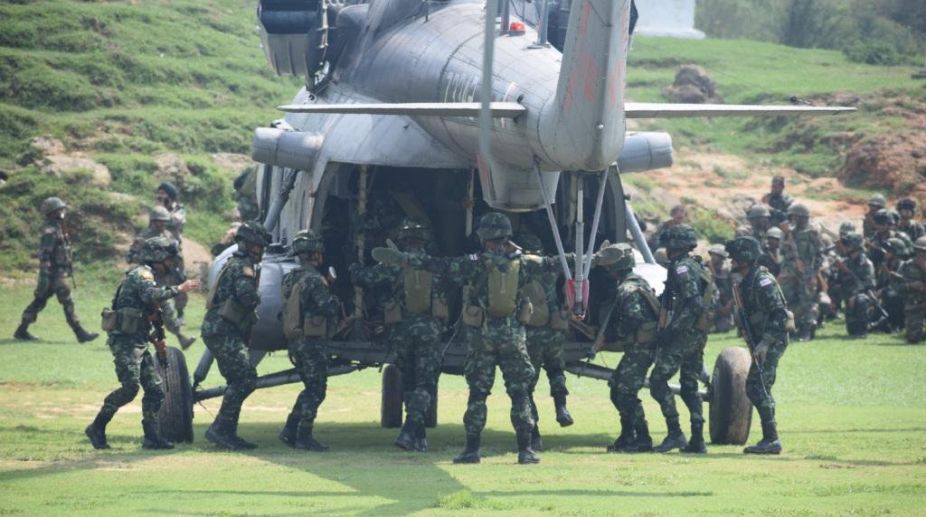Still unexplained
The hunt for the origins of Covid-19 has for the past four years been a tangled web of politics, power struggles, and international finger-pointing.

Representational Image (Photo: Twitter)
Since details of the project have not been disclosed, only an “in-principle” comment is possible on the multi-lateral military exercise in which troops from the Pakistan and Indian armies will participate later this year. Being held in the Ural mountains in Russia under the umbrella of the Shanghai Cooperation Organisation, the counter-terrorism focused drill will also feature soldiers from the six other nations, including China, that comprise the SCO; so there should be a lot to learn about how these eight armies function,a nd possibilities explored for operating in tandem ~ provided such moves receive political endorsement.
For the Indian soldiers this could provide a couple of firsts: though Indian and Pakistani troops have served in the same UN peacekeeping operation, this will be their first joint exercise. Indian and Chinese troops have conducted joint exercises earlier, but the relations between the two armies have been under strain since the stand-off at Doklam last year. Can bridges be re-built? It is, perhaps, fortunate that other armies will also be in action in “Peace Mission”, latent animosity could be prevented from spilling over.
From a purely parochial perspective, the joint exercise has much positive potential. It is easy, and common, for old-timers to sentimentally recall the common traditions that both armies cherished when they marched under a common colonial banner, or hark back to the outpouring of emotions when the forces were divided up at Partition.
Advertisement
True that some basic commonalities persist (they still swear at each other in the same language), but there are entire generations of soldiers in both armies nurtured in context of the other being the enemy. These differences, hatred if you prefer the term, are manifest on some ugly occasions, fortunately rare, like the beheading of soldiers killed along the LOC, or the mutilation of bodies duringt he hostilities at Kargil ~ happier were some of the human interest stories narrated after the fighting in 1947-48, 1965 and even 1971 when a few officers had retained personal links. Apart from the erosion of emotional links, the rhetoric of politicians on both sides have ensured that India and Pakistan have degenerated into distant neighbours.
The action in September would be a welcome opportunity to ease the distrust that has built up over the years. Much would depend on how the drills are conceived and planned: whether, will they serve as a platform for joint anti-terror missions in the future is difficult to assess at present ~ but it must be understood that no “military secrets” will be compriomised.
Since there could also be scope for considerable human interaction during the exercise, a few misconceptions might be demolished, a little goodwill generated. And that might prove as valuable as the professional lessons that the drill may foster. If the “Peace Mission” helps lower the heat in the Pakistan and Indian armies it will have scored.
Advertisement